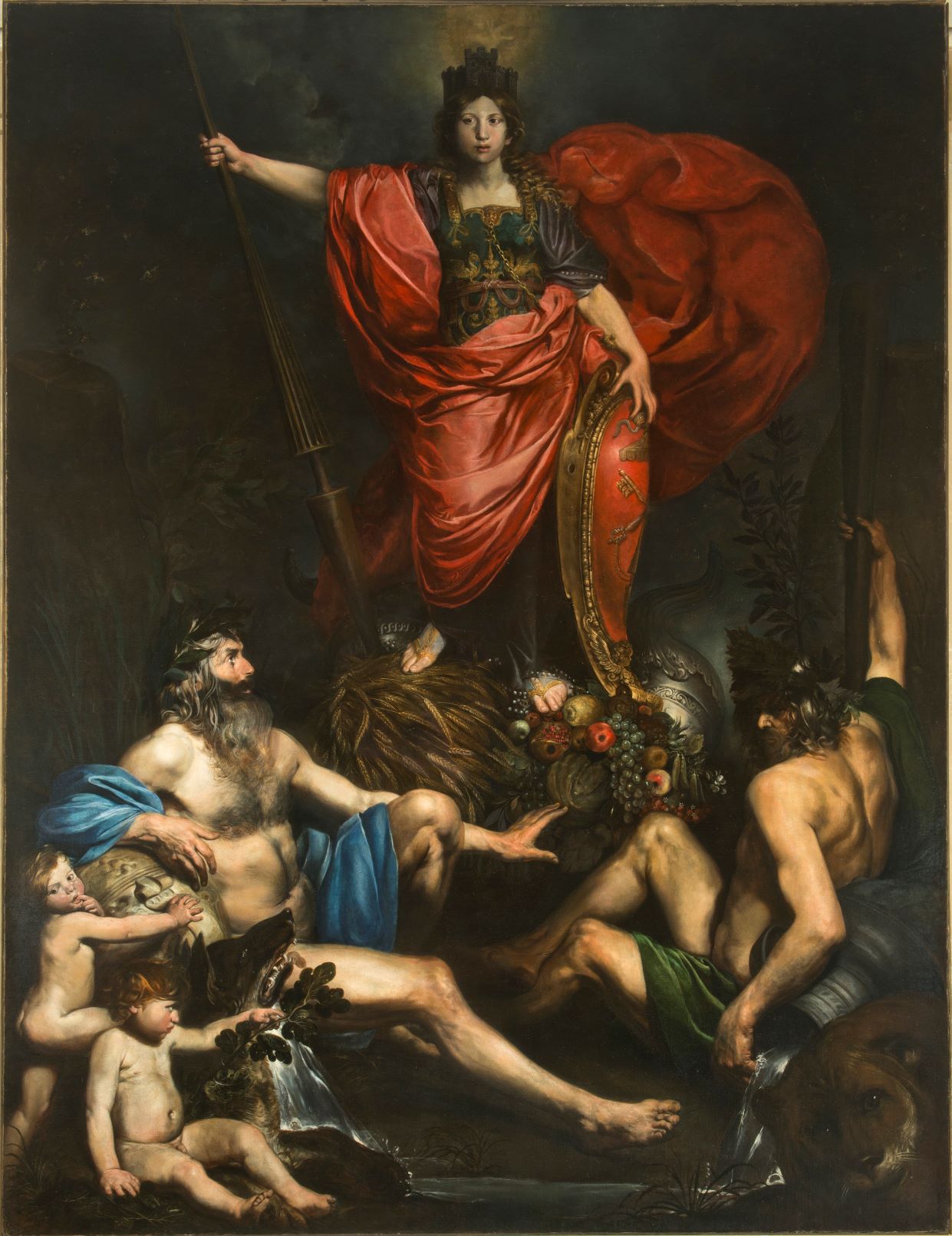[vc_row][vc_column width=”1/1″][text_output]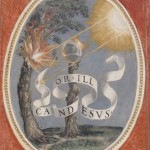 The large groined ceiling of the salone is dominated by the coat of arms of the pope Paul V Borghese. He visited the villa in 1608 when it belonged to the Lante family, relatives of the Borghese. The arms in the corners of the ceiling also indicate the kinship between the families: the black eagle and the dragon of the Borghese have been united with the three white eagles of the Lante family. In the corners of the vaults, have been preserved the painted impresas or emblems of Baldassarre Turini and the pope Clemens VII. The impresas SVAVE and SEMPER of Leo X are of stucco. The oval shaped impresa of Clemens VII carries the text CANDOR ILLESUS (candidness is unharmed). The same emblem can be found in the stanzas of the Vatican Museums and in other buildings of the Medici family, such as Villa Madama.
The large groined ceiling of the salone is dominated by the coat of arms of the pope Paul V Borghese. He visited the villa in 1608 when it belonged to the Lante family, relatives of the Borghese. The arms in the corners of the ceiling also indicate the kinship between the families: the black eagle and the dragon of the Borghese have been united with the three white eagles of the Lante family. In the corners of the vaults, have been preserved the painted impresas or emblems of Baldassarre Turini and the pope Clemens VII. The impresas SVAVE and SEMPER of Leo X are of stucco. The oval shaped impresa of Clemens VII carries the text CANDOR ILLESUS (candidness is unharmed). The same emblem can be found in the stanzas of the Vatican Museums and in other buildings of the Medici family, such as Villa Madama.
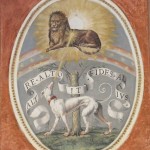
The impresa of Turini carries the phrase ALTORE ALTO IT FIDES ALTIUS (freely translated: The higher the lord the greater the loyalty) and a greyhound that looks towards a lion. The animals are connected by rays of light which lead from the mouth of the dog to the heart of the lion. The interpretation of the impresa is simple. The greyhound is the symbol of Turini; it appears also in the coat of arms of the family, which has remained in the garden of the villa and on Turini’s sepulchral monument in the cathedral of Pescia. The lion, as well as the laurel leaves on the background, refers to Leo X and the Medici family. The phrase of the impresa emphasizes Turini’s loyalty towards Leo X.
The four frescoes that once decorated the ceiling of the salone are nowadays in Palazzo Zuccari. They picture stories and legends of the Antiquity. In the smaller squares there were 32 frescoes with amorinos and mythological motifs. Henrik Lilius states that the iconographic content of the paintings in the salone is directly connected to the propaganda of the Medici family, according to which choosing Giovanni de’ Medici as the pope Leo X started a new ”golden era” in Rome.
The encounter of the two-faced god Janus and Saturn on the Janiculum hill, depicted in the first fresco on the ceiling, meant the beginning of the Golden Era of the Antique period, which in the beginning of the 16th century was corresponded by the election of Leo X to the Holy See.[/text_output][/vc_column][/vc_row][vc_row][vc_column width=”1/2″][text_output]
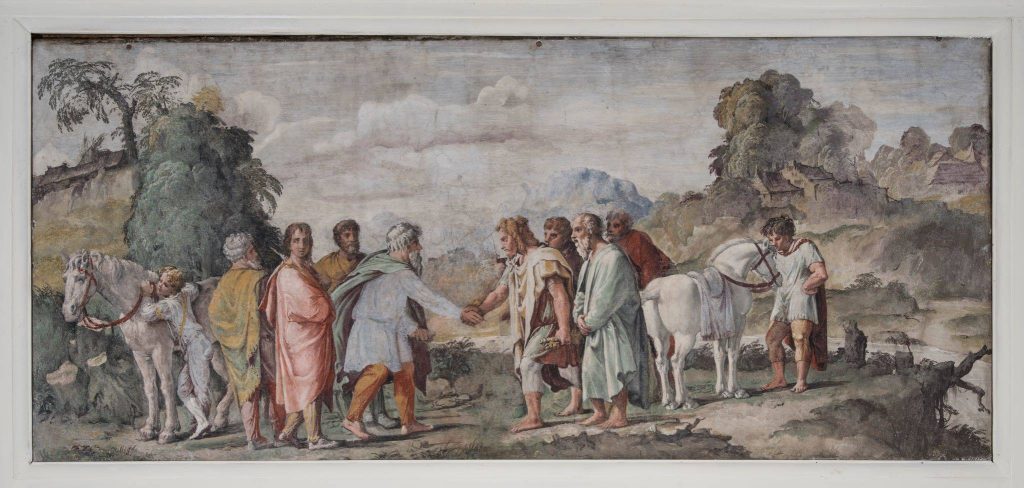
[/text_output][/vc_column][vc_column width=”1/2″][text_output]
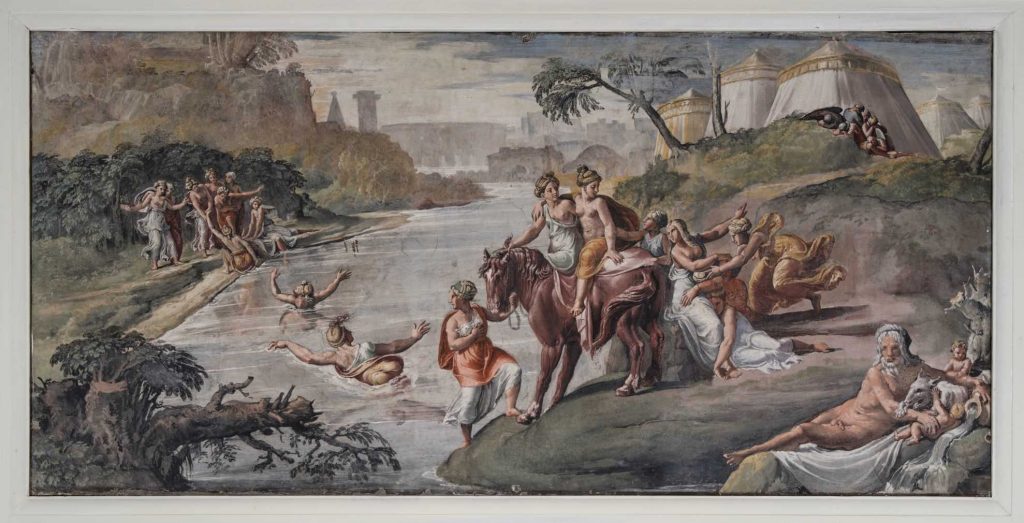
[/text_output][/vc_column][/vc_row][vc_row][vc_column width=”1/1″][text_output]Another remarkable figure in the frescoes is Numa Pompilius, the legendary king of Rome, who was the organizer of the early Roman religious life and the first pontifex maximus. In this fresco, as well, can be seen a clear connection to Pope Leo X and his central role in the religious life of the Romans.[/text_output][/vc_column][/vc_row][vc_row][vc_column width=”1/2″][text_output]

[/text_output][/vc_column][vc_column width=”1/2″][text_output]

[/text_output][/vc_column][/vc_row][vc_row][vc_column width=”1/1″][text_output]The other frescoes portray the war between the Romans and the king of the Etruscans, Lars Porsenna, and they too are related to the Medici propaganda. The peace between the Etru-scans and the Romans symbolizes the union between Rome and Florence, protected by Leo X. According to modern conception the frescoes were made by artists of Raphael’s school, such as Polidoro da Caravaggio and Maturino. In their original places, in shell shaped settings there are eight stucco heads, which are in direct iconographic connection with the paintings. Above the windows there are the two headed Janus and bearded Saturn, on the east side (on the side of the loggia) young Bacchus with bunches of grapes and Ariadne with a ribbon over her bare chest. On the south side there are the main characters of the war between the Romans and the Etruscans, the Roman maiden Clelia and the Etruscan king Lars Porsenna in a mighty armour.[/text_output][text_output]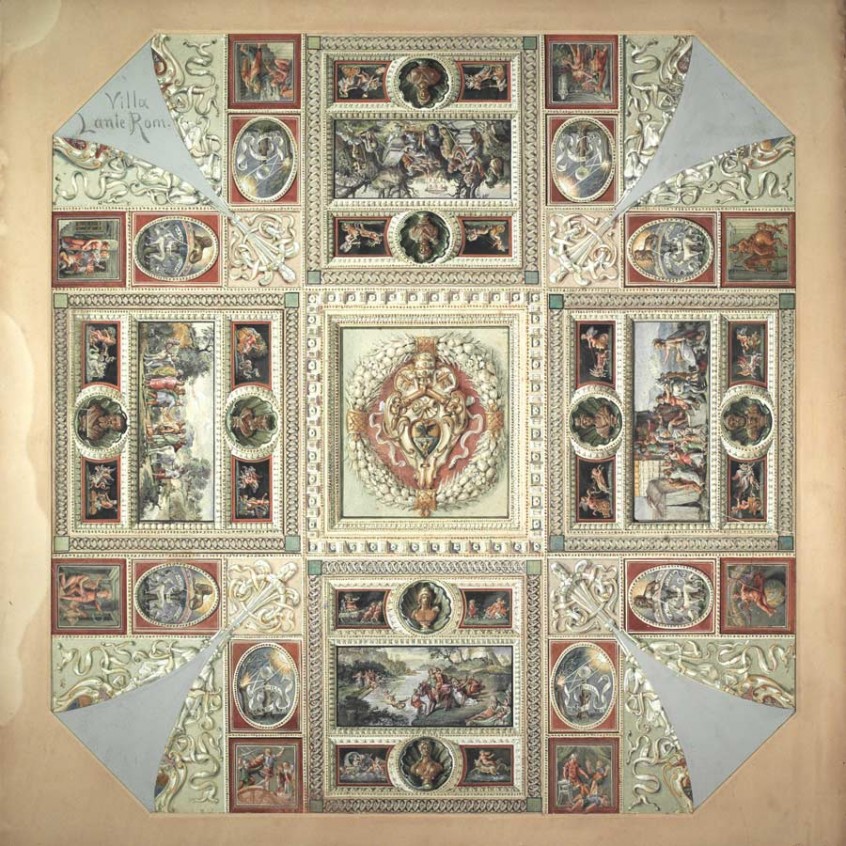 [/text_output][/vc_column][/vc_row][vc_row][vc_column width=”1/1″][text_output]Over the fireplace there is another bearded man, possibly Numa Pompilius and a female figure, maybe Vesta whose cult was created in Rome in Numa Pompilius’ times. The walls of the salone were painted imitating valuable marble and other stone walls. Buildings of the Antique Roman Imperial period, such as Pantheon, were used as models. In the 1974 restorations, some of these decorations were brought out and a part of the walls was left in the neo-classical form as a sign of the renovations made by Valadier in 1807.
[/text_output][/vc_column][/vc_row][vc_row][vc_column width=”1/1″][text_output]Over the fireplace there is another bearded man, possibly Numa Pompilius and a female figure, maybe Vesta whose cult was created in Rome in Numa Pompilius’ times. The walls of the salone were painted imitating valuable marble and other stone walls. Buildings of the Antique Roman Imperial period, such as Pantheon, were used as models. In the 1974 restorations, some of these decorations were brought out and a part of the walls was left in the neo-classical form as a sign of the renovations made by Valadier in 1807.
[/text_output][text_output]On the west wall, Valentin de Boulogne’s large oil painting “Allegory of Italy”, represents Italy (the woman in the middle) and two of its important rivers: the Tiber (the man on the right) and the Arno (the man on the left). Antonio Canova’s plaster reliefs above the doors depict ”Socrates in the Fight of Potidea” and ”Socrates Bids Farewell to His Family” (west wall, left and right of the painting of Valentin), ”The Birth of Bacchus” and ”The Death of Adonis” (south wall) and ”To Teach the Ignorants” and ”To Feed the Hungry” (east wall).[/text_output][text_output][/text_output][/vc_column][/vc_row]
